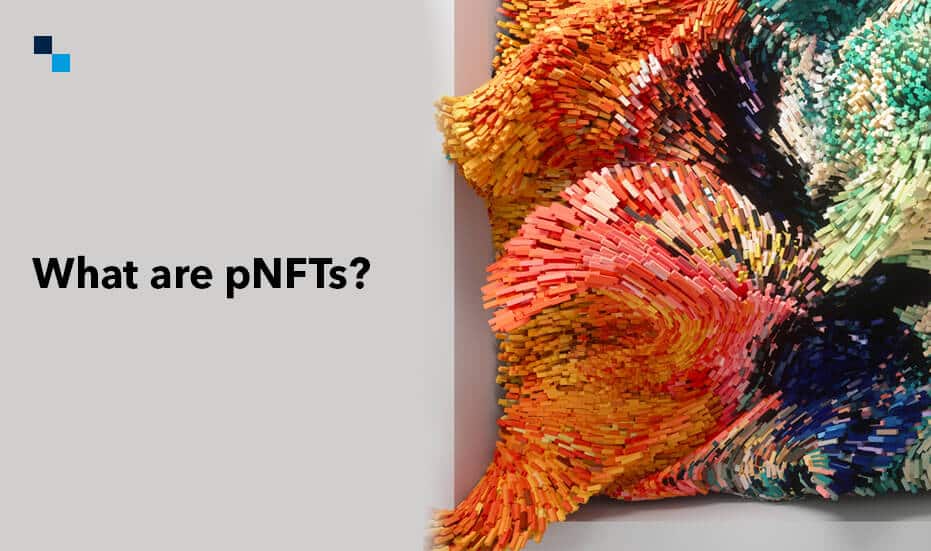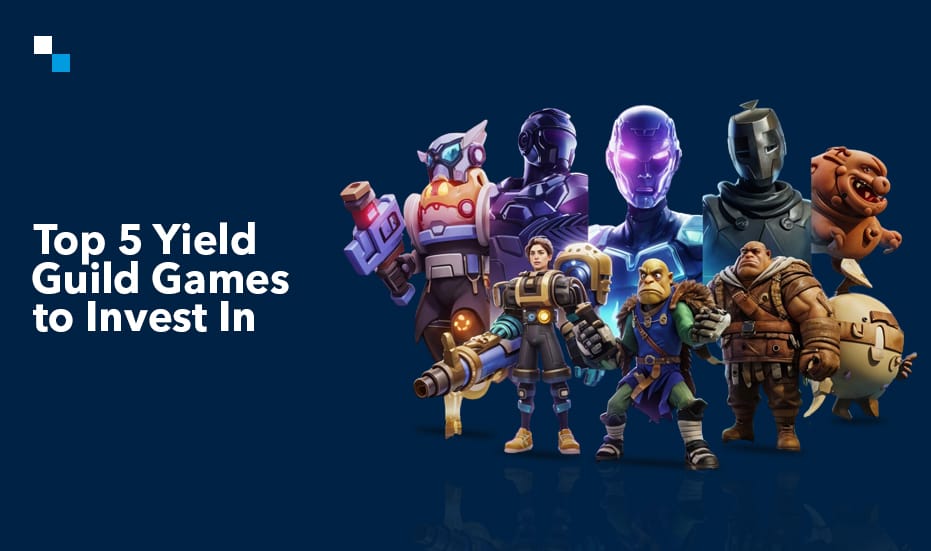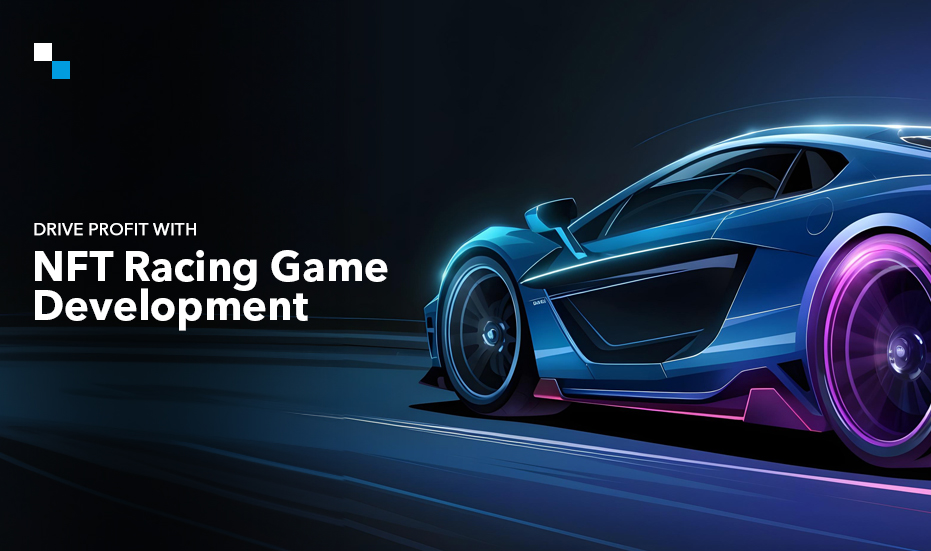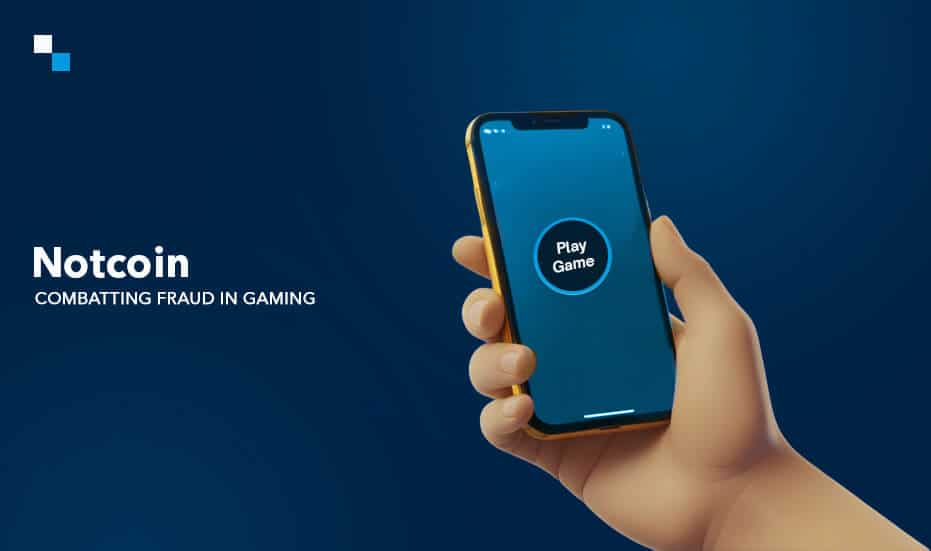
How Smart Contract Auditing Keeps Cyber Threats at Bay?
July 5, 2024
Crypto Arbitrage Trading Bot Development: Key Strategies for 2024
July 8, 2024The Non-Fungible Token (NFT) landscape is no longer confined to the realm of digital art and collectibles. This burgeoning technology is rapidly expanding its reach, encompassing a wider range of applications for global enterprises and investors.
In this blog, we’ll delve into what are programmable NFTs, its capabilities, and the emerging opportunities it presents.
What are Programmable NFTs (pNFTs)?
pNFT is a new programmable asset class in the Solana ecosystem that allows creators and artists to define how their NFTs are used.
Programmable Non-Fungible Tokens (pNFTs) are a novel evolution within the NFT space. Unlike traditional NFTs, pNFTs contain embedded smart contracts. These smart contracts act as a set of instructions that dictate how the pNFT behaves. This allows pNFTs to be dynamic, responding to specific events or user actions.
Imagine an in-game item NFT that upgrades its stats based on gameplay, or a concert ticket NFT that automatically unlocks exclusive content when scanned at the venue. This programmable NFT functionality unlocks a new level of utility and opens doors for innovative use cases across various industries.
Capabilities of pNFTs
NFTs have transformed digital ownership, yet their capabilities extend far beyond static art or collectibles. Programmable NFTs (pNFTs) represent a revolutionary advancement by integrating smart contracts directly within the NFT itself. These smart contracts open up new possibilities, converting pNFTs from mere ownership tokens into dynamic and interactive assets. Let’s delve into the exciting capabilities that pNFTs offer:
- Dynamic Functionality: Unlike static NFTs, pNFTs can respond and adapt to external stimuli or user actions. Consider an in-game character NFT that levels up with gameplay or a concert ticket NFT that unlocks exclusive content upon entry.
- Automated Processes: pNFTs can automate predefined actions through their embedded smart contracts. This includes automatic royalty distribution for artists, self-executing token splits upon specific events, or programmed access control for gated communities.
- Conditional Ownership: pNFTs enable the creation of conditional ownership structures. For instance, a loyalty program NFT that grants access to exclusive benefits only after reaching a specific tier, or a real estate NFT that automatically transfers ownership upon fulfilling specific contractual obligations.
- Enhanced Security: Smart contracts within pNFTs can incorporate security features such as multi-signature approvals for transfers or restrictions on unauthorized modifications. This enhances the security and control over pNFT ownership and interactions.
- Fractional Ownership: pNFTs facilitate the fractionalization of real-world assets. Imagine co-owning a piece of digital art or a virtual land parcel by dividing the ownership into smaller, tradable pNFT fractions.
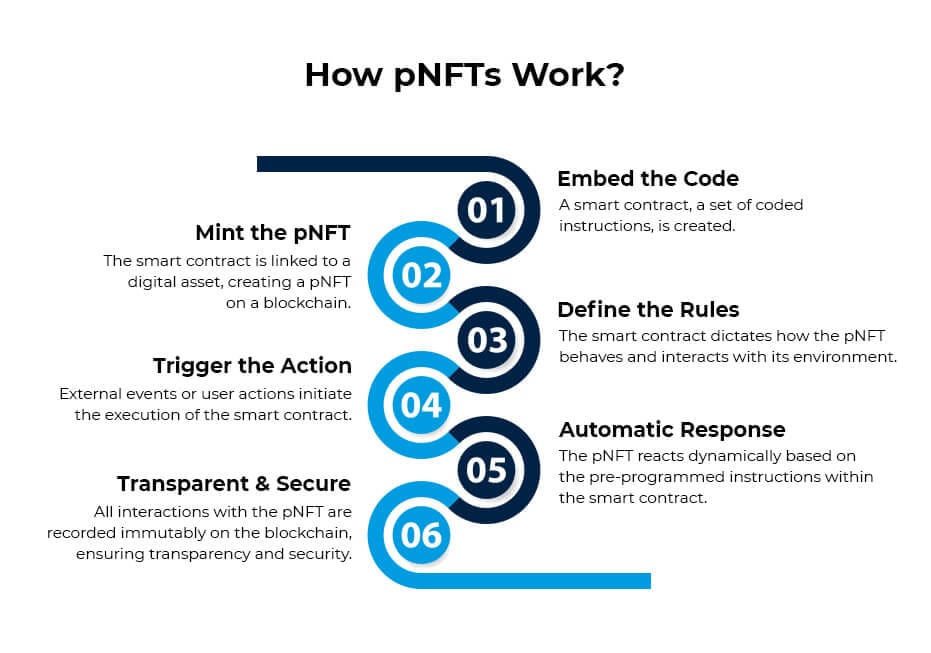
Examples of Popular Programmable NFTs
Programmable NFTs (pNFTs) are a relatively new innovation in the NFT space, so there aren’t tons of super well-established collections out there yet. However, there are some interesting examples that showcase the potential of pNFTs:
1. Metaplex Programmable NFTs
This isn’t a single collection, but rather a standard developed by Metaplex for the Solana blockchain. Launched in early 2023, it’s the most popular pNFT standard and is supported by marketplaces like Magic Eden and Phantom. The key feature here is royalty enforcement. Creators can set rules that prevent their pNFTs from being traded on platforms that don’t guarantee them royalties on secondary sales. This offers creators more control over their revenue streams.
2. SPL-404 Standard Collections
This is another standard on Solana, but it takes a different approach. SPL-404 allows for NFTs with embedded functionalities. Some early projects using this standard include Mutantmon, Mall Street, and Flyffys. These pNFTs might have features like dynamic visuals that change based on certain criteria or the ability to interact with them in a game environment.
It’s important to note that the pNFT space is evolving rapidly. These are just a couple of examples, and new use cases and functionalities are emerging all the time.
Create & Launch Your Own pNFTs on Solana
The world of NFTs is undergoing a fascinating transformation. Enter programmable NFTs (pNFTs), a revolutionary concept that injects functionality and dynamism into these unique digital assets. On the Solana blockchain, pNFTs are poised to reshape the NFT landscape, offering creators and collectors a powerful new set of tools.
We’ll delve into the steps involved, from setting up your development environment to launching your programmable masterpieces.
1. Development Environment Setup
- Node.js and TypeScript: Ensure you have Node.js (version 16.15 or higher) installed. You’ll also need TypeScript and the ts-node package to compile and run your code.
- Solana Development Environment: Set up a development environment to interact with the Solana blockchain. You can leverage tools like the Solana CLI or opt for a provider like QuickNode for a more robust experience.
- Solana Wallet: Secure a Solana wallet to store your SOL tokens and manage transactions. Popular options include Phantom and Solflare. Remember, keep your private key secure, as it grants access to your wallet and funds.
2. Selecting a pNFT Standard:
Solana offers multiple pNFT standards, each with its own advantages:
- Metaplex Programmable NFTs: This widely adopted standard empowers creators with royalty enforcement. You can define rules that prevent trading on platforms that don’t guarantee creator royalties.
- SPL-404 Standard: This standard focuses on embedding functionalities within NFTs. Imagine NFTs with dynamic visuals or the ability to interact with them in a game.

3. Programming the pNFT Functionality
You’ll need to write code to define the programmable aspects of your pNFT. This involves:
- Defining the NFT Metadata: Create the core information about your pNFT, including its name, description, and any associated visuals.
- Programming the Functionality: This is where the magic happens. Depending on your chosen standard (Metaplex or SPL-404), you’ll write code to implement the desired functionality, like royalty enforcement or dynamic visuals.
- Testing, Testing, Testing: Rigorously test your code to ensure everything functions as intended before deploying your programmable NFT.
4. Launching Your pNFT Collection:
- Deploying Your Program: Once your code is solid, deploy your pNFT program to the Solana blockchain. This involves interacting with the chosen standard’s tools and paying transaction fees.
- Minting Your pNFTs: Use your deployed program to mint (create) the actual pNFT tokens. This process might involve specifying the number of pNFTs in your collection and any variations within them.
- Connecting to a Marketplace: Integrate your pNFTs with a compatible Solana marketplace like Magic Eden or Phantom. This allows collectors to discover and purchase your creations.
The Verdict
As standards mature and development tools become more user-friendly, creating sophisticated programmable NFTs will become more accessible. This will open doors for a wider range of creators to experiment and push the boundaries of what’s possible within the NFT landscape. However, challenges like ensuring interoperability between blockchains and defining clear legal frameworks for pNFT functionalities need to be addressed. Overall, pNFTs represent a significant leap forward in the digital asset space, paving the way for a future where NFTs are not just static collectibles but dynamic, interactive building blocks within the evolving digital world.
Antier, a leading NFT development company, is at the forefront of pNFT innovation. With a team of passionate developers and a deep understanding of the Solana ecosystem, Antier is ideally positioned to help you craft and launch your next-generation programmable NFT project. Whether you envision an NFT that unlocks exclusive content based on community challenges or a dynamic artwork that reflects the market, Antier has the expertise to turn your vision into reality.
